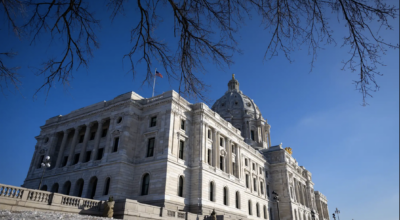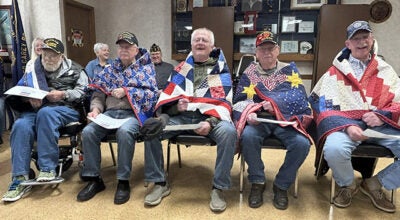Public meets with officials to talk water resources, plans
Published 9:53 pm Wednesday, August 21, 2019
Members of the public took their opportunity with water resources planners and professionals Wednesday night to help prioritize water plans previously left up to separate government agencies.
Community members were invited to a public kickoff of One Watershed, One Plan, a water planning effort that groups the 10-year water plans counties, watershed districts and Soil and Water Conservation districts used to make separately into one plan based on watershed boundaries.
Managing water as political entities can pose a problem because water does not flow based on politics, said Minnesota Board of Water and Soil Resources One Watershed, One Plan Coordinator Julie Westerlund.
“As we know, water doesn’t care,” she said. “Water completely ignores political boundaries except for when a political boundary happens to be a river.”
The Shell Rock River and Winnebago River watersheds — grouped together in the process for efficiency of water planning, Westerlund said — are at the planning stages in this process.
Approximately 25 people — of whom just under half were natural resource professionals from the Minnesota Department of Natural Resources, BWSR, Natural Resources Conservation Service and Shell Rock River Watershed District — contributed priorities for the One Watershed, One Plan steering committee to consider.
Julie Blackburn, Minnesota operations manager for consulting firm RESPEC — hired to write the water management plan, asked community members to dialogue on a trio of questions about water and natural resources. She will use the comments to work with local One Watershed, One Plan committees to help develop the content of the plan.
“You’re an important part of this process, and we want to make sure you understand that,” Blackburn said. “We are going to use your information.”
Albert Lea resident Wendy Hagen lives across the street from Albert Lea Lake. She said she believes everyone needs to take ownership of natural resource problems rather than handing them off to officials to handle.
“I think we need to keep on educating people about what treasures we have in town and how they belong to all of us, no matter who we are,” Hagen said. “… What one person does makes a difference.”
Some priorities identified by those attending are as follows:
Thinking about the natural environment in your community, what are some of the things you care about?
• Water quality, both in drinking water and the lakes
• Native plantings, trees and green spaces
• Reducing chemical usage and regulating the use of pesticides
• Creating a legacy for the next generation
What do you think are the major concerns or issues facing natural resources in this area?
• Chemical runoff from farms
• Urban sprawl
• Uneducated citizens
• Lack of urgency to act
• Unwillingness to change habits
• Shoreline
• Invasive species
• Salt pollution
• Funding
What strategies or future actions do you think make sense to protect and restore natural resources in the area?
• Education
• Partner with Iowa
• Support ongoing efforts
• Soil health practices (cover crops, for example)
• Communication
‘We are water people’
Before they began, Westerlund encouraged those gathered to consider their relationship with water. Water is important to Minnesota’s culture and Minnesotans’ sense of self and sense of identity, she said.
“We are water people here in Minnesota, and we work on the water, we play on the water,” Westerlund said.
She showed participants a map of Minnesota pre-European settlement, and a map of Minneosota with its current land use. Hard surfaces like cities and roads and a shift to agricultural land use were prominent, but so was a pronounced loss of wetlands.
How humans interact with the land affects how we interact with water, as it changes how water flows across the land and can increase what comes off the land and goes into the water, she said.
“The main things that we’re really concerned about especially in this watershed are sediment and nutrients,” Westerlund said.
Funding from the state Clean Water, Land and Legacy amendment has provided resources to allow a better understanding of natural and water resources over time, Westerlund said.
One Watershed, One Plan is a way to take that data and “really understand it, and decide what kind of actions we want to take in the future to address the problems and the opportunities that we might be seeing in the data,” she said. “And the important part about this is it’s not just data. It’s what you care about.”
Verne Kiel, an Albert Lea resident, said he cares about a clean environment for water trails and lakes and well-maintained parks.
The current natural and water resources in the area are improved compared to 50 years ago, Kiel said.
“We’re headed in the right direction, but we need to get more people involved and educated, because water is, we can’t do without it,” Kiel said.
That relationship between people and water is a baseline in One Watershed, One Plan, Westerlund said.
“We need water,” Westerlund said. “And water needs us. So, that’s the starting point for this whole process.”
Blackburn said the goal is to have the plan written within 10 months.




